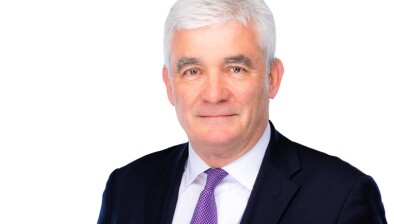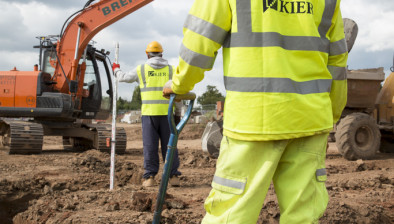‘Strong’ Scottish performance helps Kier return to profit
Kier Group has returned to profit thanks to its continued restructure and a ‘strong’ contribution from Kier Construction Scotland.
Announcing its full-year results for the year to 30 June 2017, the property, residential, construction and services group reported a pre-tax profit of £25.8 million on revenue up 5% to £4.27 billion. The previous year it lost £15m before tax.
Operating profit for the year was up 3% to £146m (2016: £141m) and the order book stands at £9.5bn.
The results were supported by Kier Construction Scotland, which has a turnover in excess of £150m per annum and employs over 200 people from its offices in Glasgow, Aberdeen, Inverness and Newcastle.
The contractor has continued to expand its order book, and provide diverse local employment and training opportunities throughout the country.
Brian McQuade, managing director of Kier Construction Scotland, said: “In Scotland, Kier has secured a strong and steady pipeline of activity through increasing our framework and tender wins. Most recently we have been appointed as a partner on the £160m Aberdeenshire Council Social Housing Improvement Framework and the £125m Aberdeenshire Council Capital Works Framework.
“We have also strengthened our healthcare portfolio with a number of recent wins, including work with NHS Greater Glasgow and Clyde at Stobhill Hospital, NHS Highland at Raigmore Hospital in Inverness and we have been appointed principal supply chain partner at Golden Jubilee National Hospital under Frameworks Scotland 2.
“Education remains an important sector for us and we are currently developing the design and build requirements for the new £25m Queen Margaret Academy in Ayr and we are on site at the £43m William McIlvanney Campus in Kilmarnock and at the £35m redevelopment of Marr College in Troon. In conjunction with our partners, hub South West, we have recently completed the £25m Ayr Academy for South Ayrshire Council and the £36m Garnock Campus for North Ayrshire Council.

Mr McQuade added: “Kier Construction Scotland is also working on an exciting range of heritage projects, restoring some of the country’s most important landmarks for future generations to enjoy. We have just completed the new roof as part of the intricate restoration work that we are carrying out at the world-renowned Mackintosh Building for Glasgow School of Art. We have also completed the first phase of the Grade A-listed sandstone building off Lauriston Place for Edinburgh College of Art, in time for the new academic year and work is on schedule as we restore of one of Scotland’s oldest and most historic concert halls – the A-listed Aberdeen Music Hall.”
Internationally, the closure of the Caribbean and Hong Kong businesses resulted in non-underlying charges of £86m. But the sale of Mouchel Consulting in October 2016 generated a profit on sale of £40m.
Chief executive Haydn Mursell said: “Our underlying performance for the year was good. Having simplified our portfolio, the group is more focused and able to pursue its growth ambitions in our three core markets; building, infrastructure and housing, which now represent 90% of the group’s revenue and profit. We continue to invest in the business to improve our operational efficiency, providing a robust platform on which to take advantage of the strong long-term fundamentals in these core markets.
“Our Construction and Services order books of £9.5bn, together with our c.£2bn property development and residential pipelines, provide good long-term visibility of our future work. This visibility, coupled with our healthy balance sheet, provides us with confidence of achieving our Vision 2020 strategic targets.”
He added: “We are progressing well with the roll-out of our £70m investment in a new Oracle ERP system with 70% of the group now operating on the new platform. This system provides high quality and timely information, together with improved back office systems and efficiencies.”













